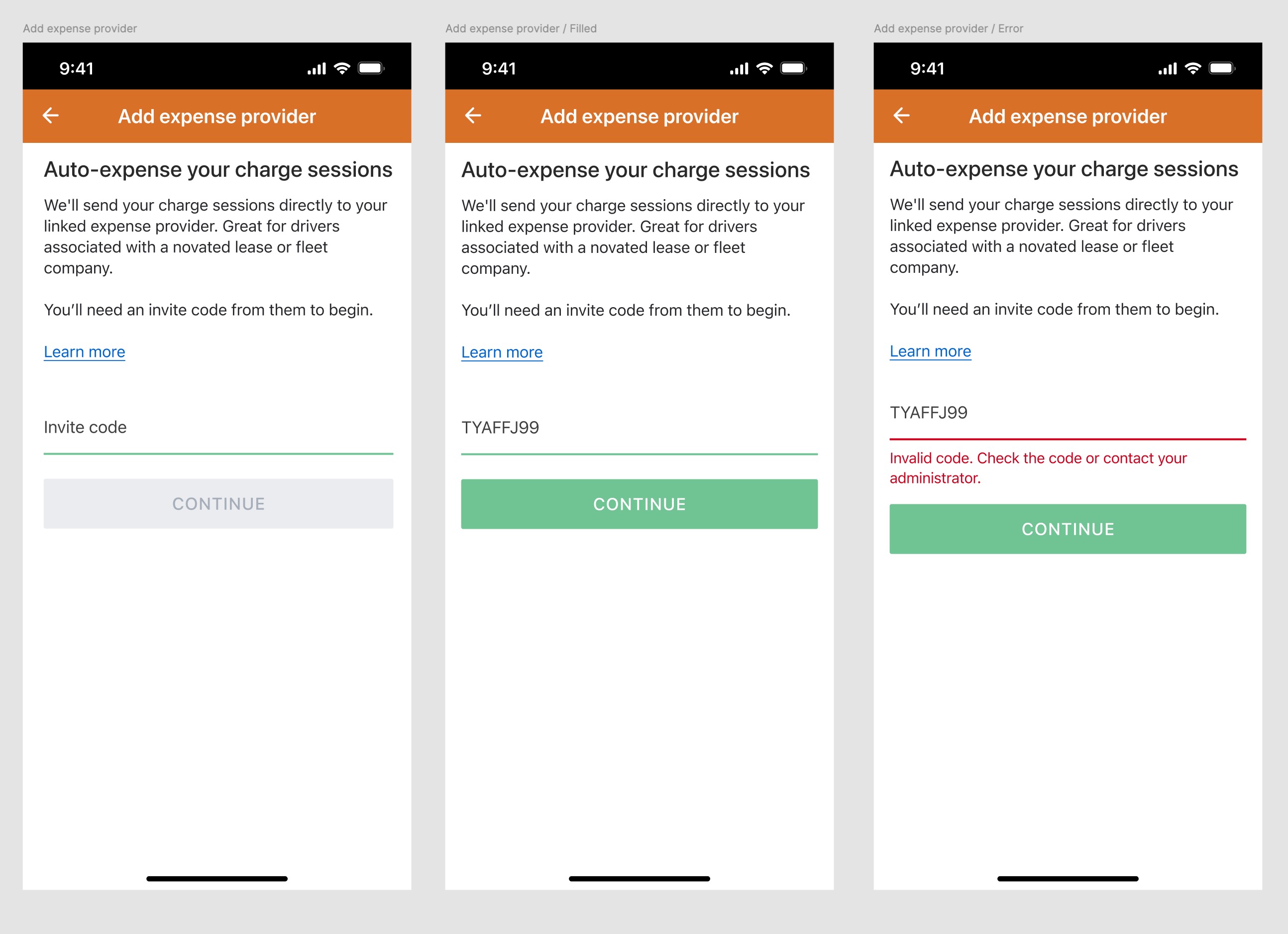
We designed and implemented a mobile app payment method switcher that streamlined onboarding, reducing completion times by over 90% and saving internal teams up to 4 hours daily. By rethinking established fleet workflows, we created a scalable solution that not only improved efficiency but also delivered a standout user experience.
The problem
Fleets are organisations that manage groups of vehicles, such as corporate or government fleets. Currently, fleets rely on a physical RFID card to initiate a charging session, yet non-fleet drivers can use the Chargefox app to charge. Charging with an RFID card comes with a number of issues:
- Fleet managers spend hours each week ordering and distributing RFID cards for drivers.
- When fleet managers don't activate RFID cards in Chargefox, drivers can't charge their vehicle.
- Internally, Chargefox spends 2-4 hours per day fulfilling RFID card orders for fleet customers.

The process
We captured feedback and evidence of the problem from our sales team, listened to numerous customer support phone calls, sifted through Zendesk support tickets, and revisited research stored in Dovetail.
Once we believed we had a better understanding of the problem, we mapped our assumptions in Miro. We circled the assumptions with the least amount of evidence we thought were the most important to focus on first. Then, we started thinking about ways we could test these assumptions.

To test these assumptions, we wanted to speak with customers. I created discussion guide and tailored the conversation around the assumptions we wanted to test. We spoke with fleet managers, fleet drivers, and private novated lease drivers and quickly validated/invalidated many of our key assumptions. One of these was a pain point around RFID management, and how much time a digital solution might save fleet managers.

Ideation
Taking the findings from our interviews and other research artefacts, I ran an ideation workshop with engineers and our product manager to brainstorm potential solutions. I challenged the team to consider how their solutions might impact system-wide services, other product areas, and our internal operational efficiencies.
We realised this would be a large piece of work as each team highlighted how their solutions would have a ripple effect on various other areas of the business.

We voted on our favourite solution and mapped user stories by 'must have', 'should have', 'could have', and 'won't have'. This was important given the potential for scope creep during this epic.

From there, I started the ideation process in Miro, making sure not to build high fidelity, detailed prototypes. This helped with keeping focus on the bigger picture and less about aesthetics. I created journey maps for fleet managers, drivers, and flows for how everything, from our internal tools, mobile app, and business portal would fit together.


Testing
After lots of great collaboration and discussion within the team, we were ready to speak with fleet managers and drivers. We tested multiple prototype versions with drivers and held separate sessions with fleet managers. The Chargefox app has nearly 200,000 registered users, so it was crucial we get the app experience right.
We tested prototypes with drivers asking them to perform a series of tasks that included linking their app account to their fleet, changing between their personal payment method and their fleet payment method, and how they felt about new terminology we were introducing to the app experience.



For fleet managers, we tested prototypes in the desktop portal and captured feedback on the flow for inviting a driver to a fleet in replace of an RFID card. Before introducing the concept and having them use the prototype, fleets were hesitant on making the switch from traditional RFID and fuel cards to a fully digital solution. Once they saw the prototype and realised the potential time savings, they began to see how powerful and transformational for their operations this was.

Impact
For fleets using this feature, we cut driver onboarding times from one week to less than 24 hours by drastically reducing the amount of time it took to order and distribute physical RFID cards to drivers. For drivers, we helped them automate their public charging expense claims by enabling them to link their fleet in the app, negating the need for a physical RFID card entirely. Internally, we reduced time spent processing RFID cards by up to 4 hours a day.
We created a 'hero' moment for fleet customers who had been using traditional plastic RFID cards by introducing a digital solution that not only saved them time, but made their own customers and drivers happier.
Overall, we were able to build a cohesive solution that met the needs of fleet customers, drivers, and our internal operations team.
Lessons learned
Digital solutions create tangible value: Replacing physical RFID cards with a digital solution drastically reduced onboarding times, saved operational resources, and improved driver satisfaction. This demonstrated how digital solutions can deliver measurable time and cost savings for both customers and internal teams.
Clear communication and terminology drive user success: Testing terminology, like “expense provider,” with users ensured that the language used in the app resonated and didn’t cause confusion. This was key to creating a seamless and intuitive experience for drivers and fleet managers.
Metrics prove success and build momentum: Quantifying pain points such as the time it takes for RFID order fulfilment both internally and for fleets validated the impact of the work we did, and helped drive momentum within our team.
